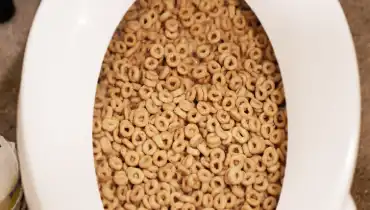Are You Permitted to Flush Food Down the Toilet?
Are You Permitted to Flush Food Down the Toilet?
Blog Article
This great article down the page involving Is it safe to flush food (especially rice) down the toilet? is immensely remarkable. Check it out for yourself and decide what you think about it.

Intro
Lots of people are commonly confronted with the issue of what to do with food waste, especially when it involves leftovers or scraps. One usual inquiry that develops is whether it's alright to flush food down the toilet. In this write-up, we'll explore the reasons why people might take into consideration flushing food, the repercussions of doing so, and different techniques for proper disposal.
Reasons that individuals could take into consideration purging food
Lack of recognition
Some people might not understand the prospective damage brought on by purging food down the toilet. They may erroneously believe that it's a harmless method.
Ease
Flushing food down the toilet might look like a fast and very easy solution to taking care of undesirable scraps, specifically when there's no close-by trash can offered.
Laziness
In some cases, individuals might just select to flush food out of sheer laziness, without taking into consideration the effects of their activities.
Effects of flushing food down the toilet
Environmental impact
Food waste that ends up in rivers can add to air pollution and injury water ecological communities. In addition, the water utilized to flush food can strain water sources.
Pipes problems
Flushing food can bring about clogged pipes and drains pipes, triggering costly pipes repairs and inconveniences.
Kinds of food that should not be flushed
Coarse foods
Foods with fibrous textures such as celery or corn husks can get tangled in pipes and cause blockages.
Starchy foods
Starchy foods like pasta and rice can absorb water and swell, leading to obstructions in pipelines.
Oils and fats
Greasy foods like bacon or food preparation oils need to never be purged down the toilet as they can solidify and trigger clogs.
Appropriate disposal methods for food waste
Using a garbage disposal
For homes outfitted with waste disposal unit, food scraps can be ground up and purged with the plumbing system. Nevertheless, not all foods appropriate for disposal in this way.
Recycling
Specific food packaging materials can be recycled, minimizing waste and minimizing environmental effect.
Composting
Composting is a green means to dispose of food waste. Organic products can be composted and utilized to enhance dirt for gardening.
The relevance of proper waste administration
Decreasing environmental damage
Proper waste management methods, such as composting and recycling, aid minimize contamination and maintain natural resources for future generations.
Safeguarding plumbing systems
By preventing the practice of flushing food down the commode, house owners can stop pricey pipes repair work and preserve the stability of their pipes systems.
Conclusion
Finally, while it may be alluring to flush food down the toilet for benefit, it is essential to understand the prospective effects of this action. By taking on appropriate waste monitoring practices and throwing away food waste properly, people can contribute to much healthier plumbing systems and a cleaner atmosphere for all.
FLUSH FOOD DOWN THE TOILET?
FLUSHING FOOD CAN CAUSE BLOCKED DRAINS IN YOUR HOME
All of the plumbing fixtures in your home are connected to the same sewer pipe outside of your home. This outdoor sewer pipe is responsible for transporting all the wastewater from your home to the Council sewer mains. Even small pieces of food that go down the kitchen sink can cause problems for your sewer. It should therefore be obvious that flushing larger bits of food, such as meat, risks a clog in either the toilet itself or the sewer pipes. Flushing greasy food is even more problematic because oil coagulates when it cools, coating the interior lining of your pipes.
THE TOILET IS NOT A BIN
Food isn’t the only thing that people shouldn’t be flushing down the toilet. People use the toilet to dispose of all kinds of things such as tampons, makeup wipes, dental floss, kitty litter and even underwear. Water goes to great lengths to educate residents about the high costs and stress placed on wastewater treatment systems simply from people flushing the wrong stuff down the toilet. It costs taxpayers millions of dollars each year, and homeowners thousands in blocked drain repairs.
FLUSHING FOOD IS A WASTE OF WATER
Flushing food is a waste of our most precious resource - water. In June this year Level 1 water restrictions were introduced to protect water supply from drought conditions. Much of New South Wales continues to be affected by prolonged drought with recent figures revealing up to 97 per cent of the state remains in drought. Depending on whether you have a single or dual flush toilet, every single flush uses between five and 11 litres of water. In the current climate this is a huge amount of water to be wasting on flushing food that should be placed in the bin (or better yet, the compost).
https://www.jabplumbingsolutions.com.au/blog/can-you-flush-food-down-the-toilet

I hope you liked our article about Think Twice Before Flushing Food Down Your Toilet. Thank you for taking time to browse our blog. Make sure you set aside a second to share this blog posting if you appreciated it. We thank you for reading our article about Flushing Food Down the Toilet?.
Source This Article Report this page